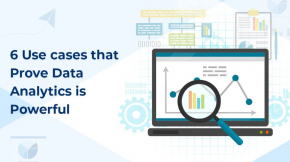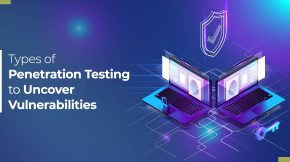Eliminate AppSec Anxiety with Penetration Testing as a Service
“The global average cost of a data breach in 2023 was USD 4.45 million”. This is not us saying, but IBM’s Cost of a Data Breach Report 2023. Penetration testing has now truly become an essential part of any organization’s cybersecurity strategy.
The report also mentions that this cost has seen a 15% increase over 3 years. So, if not pentesting now, then when? As systems get more complex and threats become more advanced, penetration testing provides invaluable insights into potential vulnerabilities.
However, traditional penetration testing has its limitations in today’s DevOps environments. Annual or bi-annual tests no longer provide the visibility needed to address vulnerabilities in a timely manner.
This is where penetration testing as a service (PTaaS) comes in.
In this comprehensive guide, we will cover everything you need to know about pen testing as a service, including:
- What is PTaaS and how it works
- Benefits of PTaaS over traditional pentesting
- Choosing between PTaaS and pentesting
- What to look for in a PTaaS provider
- Use cases and applications
So if you’re looking to enhance your vulnerability management and take your pentesting game to the next level, read on!
What is Penetration Testing as a Service?
Penetration testing as a service (PTaaS) refers to a cloud-based delivery model that enables continuous pentesting through a combination of automation, machine learning, and human experts.
Unlike traditional pentests as a service which provide just a point-in-time assessment, pen testing as a service allows for frequent and on-demand testing across development environments and the software delivery lifecycle. It helps identify vulnerabilities early so they can be addressed before major damage occurs.
PTaaS platforms provide organizations with dashboards that give visibility into vulnerabilities as soon as they are discovered by automated scans or human pentesters. Detailed remediation guidance is also provided including proof-of-concepts, screenshots, and videos to simplify the fixing process.
How Penetration Testing as a Service Works
PTaaS employs a multi-step methodology to enable continuous testing and maximum visibility:
- Baseline Testing: An initial automated scan provides a baseline assessment of vulnerabilities across the environment. This identifies higher-risk issues to be the focus for immediate remediation.
- Regular Automated Scans: Scheduled weekly or monthly scans pick up any new vulnerabilities introduced via coding changes or infrastructure modifications. Scans run seamlessly in the background without affecting systems.
- Continuous Retesting: Once issues get addressed developers can request a retest to confirm fix effectiveness. This provides positive feedback to dev teams regarding remediation progress.
- Manual Testing: At least quarterly, expert pentest as a service conducts more complex tests leveraging the latest techniques that automated scans may miss. This allows the identification of logical, business and other advanced vulnerabilities.
- Supported Remediation: Detailed vulnerability reports, remediation guidance, and technical assistance facilitate faster fixing of found weaknesses.
Top Benefits of Pentesting as a Service
Pen testing as a service solutions offer many advantages over traditional penetration testing:
Continuous Security Management
By enabling frequent and recurring tests, PTaaS allows vulnerabilities to be detected early and addressed before attackers discover them. This results in a stronger security posture over time rather than the point-in-time view provided by annual pentests.
Faster Testing and Remediation Times
With automated scanning and always-available pentest as a service providers, testing can be conducted more regularly without long waiting times or scheduling issues. Similarly, detailed guidance speeds up remediation by development teams by simplifying the fixing process.
On-Demand Flexibility
Whether due to a new release, infrastructure change or compliance deadline, additional tests can be launched immediately without delay. All results and recommendations get provided in one centralized portal for better tracking.
Optimized Budgeting
Subscription-based pricing allows costs to be spread out and offers flexible scaling to meet changing needs. With reduced remediation times, efficiency is improved avoiding major breaches that cost millions to address.
Maximized Test Coverage
Regular automated scans avoid the gaps between annual pentests allowing better coverage as systems evolve. Mixing automated and manual testing combines scalability with human insight for maximized vulnerability detection.
Improved Compliance
Continuous testing and remediation better prepares organizations for audits while reports provide needed evidence of rigorous security measures being followed. This reduces audit effort and improves the confidence of stakeholders.
Integrated SDLC Security
Seamlessly embedding testing into CI/CD pipelines provides feedback to developers early in the cycle when fixing issues is easier and faster. This facilitates a DevSecOps approach with security ingrained into development.
Choosing Between PTaaS and Pentesting
Penetration testing remains an invaluable security technique that PTaaS enhances rather than replaces. When considering testing needs, focus on your organization’s requirements, constraints, and maturity:
- For advanced security teams with DevSecOps testing embedded across development, PTaaS provides extra coverage and continuous assurance.
- Smaller security groups benefit from PTaaS providing expanded capability through cost-effective use of automation and human augmentation.
- Organizations with limited budgets or irregular testing needs can utilize PTaaS for better ROI versus manual testing alone.
However, in complex environments with legacy systems, custom applications, and strict compliance needs, traditional testing may fulfill unique requirements. A hybrid approach with manual assessments every 6 months plus regular PTaaS can provide a balance of benefits.
As needs grow over time, maintaining human experts in-house while leveraging PTaaS for improved frequency, coverage and resource optimization proves very effective for many enterprises.
Key Considerations for Choosing a PTaaS Provider
Since continuous testing is delivered via a cloud platform, choosing the right provider is critical for pen testing as a service success. Below are key evaluation criteria for potential providers:
Testing Team Expertise
The skills, experience, and certifications of the human pentesters on staff indicate the ability to conduct rigorous manual tests to find advanced vulnerabilities. Customers should review biographies to confirm expertise across the latest techniques.
Platform Capabilities
The features and sophistication of the PTaaS platform itself demonstrate the ability to support various protocols, technologies, and integration needs. Customers should validate API availability, dashboard flexibility, and reporting standard support like CVSS scoring.
Service Options
Testing frequency, delivery models (resident versus remote), and ability to accommodate compliance needs should be assessed. Customers should validate flexible engagement options to meet future needs for application types, testing locations, and international scope.
Customer Support
Ongoing technical assistance for using the platform, understanding results, prioritizing vulnerabilities, and implementing remediation should be available. Look for customer-friendly documentation, live chat features, and discussion forums available.
Company Viability
Since PTaaS requires a long-term partnership, the company vision, leadership pedigree, funding status, and customer base should align with expectations. Researching client case studies and financial health reduces customer risk.
Real-World Applications of Pen Testing as a Service
PTaaS offers broad applicability across many different system types (networks, web apps, IoT devices) and industries (financial, healthcare, retail). Two great examples include:
DevSecOps Testing
By integrating automated scanning into CI/CD pipelines, code repositories, and staging environments, vulnerabilities can be detected prior to production deployment for reliable DevSecOps.
Cloud Infrastructure Testing
Hybrid cloud environments can be dynamically tested without needing to deploy agents thereby finding risks introduced by frequent infrastructure or configuration changes.
Both cases benefit from continuous test visibility rather than post-deployment pentesting helping align security with modern application release and infrastructure management practices.
The Future of PTaaS
Continuous penetration testing delivered via seamless cloud platforms is poised to expand in usage and evolve in capabilities. According to Gartner, the global PTaaS market is projected to grow at a 24% CAGR through 2025 as organizations augment standard practices to address digital transformation risks.
As coverage expands, future PTaaS solutions will provide even smarter features through applied artificial intelligence and machine learning. By custom tailoring evaluations using vulnerability telemetry and threat modeling, tests will focus on organization-relevant risks for better efficiency and results.
Conclusion
For organizations seeking to embed security assurances into application delivery and cloud deployments, Beyond Key provides the recurring vigilance needed to thwart threats early. Tight integration with DevSecOps and cloud management facilitates better collaboration and reliability than traditional pentest as a service.
With flexible engagement options, smart AI capabilities, and experienced pentesters, Beyond Key allows security teams to implement rigorous protection across today’s dynamic IT ecosystems with its penetration testing as a service.
The bottom line is that PTaaS strengthens vulnerability discovery through machine augmentation and human insight for superior mitigation.
So rather than dreading the next annual pentesting audit, take control via ongoing testing and remediation through next-generation pentesting testing as a service instead.
















